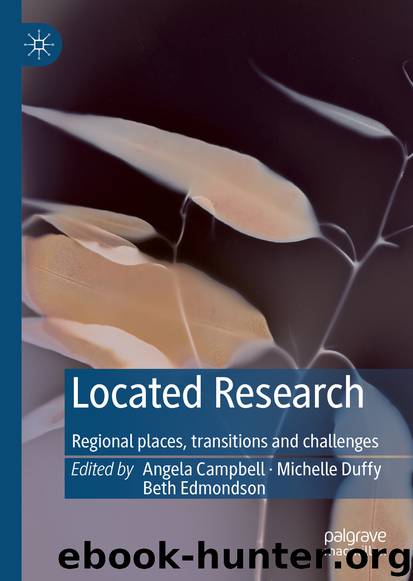Located Research by Unknown

Author:Unknown
Language: eng
Format: epub
ISBN: 9789813296947
Publisher: Springer Singapore
The possibilities offered by teaching and learning centres and institutes in regional and remote locations can be found elsewhere. For example, the University of Tromsø in northern remote rural Norway is an example of positioning an educational institution in such areas in order to help address population decrease (Gaski, Halvorsen, Aaraas, & Aasland, 2017). The Ole Bull Akadamiet, also in Norway, where university students are provided with access to an immersion course in traditional folk music and dance, is an example of investment at the university level in the national cultural heritage . Ceòlas has found inspiration from the latter and other models as innovative solutions to fill a new centre and provide a portfolio of activity required to ensure financial sustainability. This direct working link between community and college is pioneering in the UK, although precedents can be found elsewhere.
A recent report into Leadership in the Arts (Stevenson, Plimmer, Kay, Amstell, & Pitceathly, 2018) found that places of periphery are often places of opportunity and creativity, a safe space for experimentation. The partnership with Ceòlas has enabled the development of a shared aspiration for purpose-built premises—a centre for teaching, performance, community activity, archive and recording facilities. Such a partnership supports government strategies such as the Gaelic Language (Scotland) Act, 2005, which had legally secured official language status (Scottish Parliament, 2005). As well as facilitating the roll out of infrastructure to promote the survival of this language, all public bodies in Scotland now had to prepare Gaelic language plans. The location for the proposed building in South Uist is in the strongest speaking Gaelic area per head of population. The language itself, however, is fragile. Numbers of speakers and the transmission to future generations have been stabilised after many years of decline, but much remain to be done if the language is to survive as a genuine community asset. These concerns are echoed in the Lews Castle College UHI 2018-23 Gaelic Language Plan, which pledges commitment to ‘the objectives set out in the National Plan for Gaelic and has put in place the necessary structures and initiatives to ensure that Gaelic has a sustainable place at the centre of college life’ (Lews Castle College UHI, 2018: 3). UHI also has a Gaelic Language Plan 2014–2018 and is ‘intensely aware’ of its obligation as the only university covering the Gaelic-speaking areas (University of the Highlands and Islands Gaelic Language Plan, 2019:2). So while the rapid curriculum innovation and development had taken up LCC music staff time, this had facilitated the forging of a partnership that was then able to draw up a business case and building designs and secure funding. This centre was to be named Cnoc Soilleir (‘the bright hill’ in Gaelic), and at the time of writing has secured funding for the first phase of this exciting project (Comhairle nan Eilean Siar, 2019). Such a development offers the possibility of attracting students to the islands by providing up-to-date facilities, new additional curriculum and in turn a sense of student community that comes from increased numbers on the ground.
Download
This site does not store any files on its server. We only index and link to content provided by other sites. Please contact the content providers to delete copyright contents if any and email us, we'll remove relevant links or contents immediately.
Kathy Andrews Collection by Kathy Andrews(10521)
The remains of the day by Kazuo Ishiguro(7551)
Spare by Prince Harry The Duke of Sussex(4199)
Paper Towns by Green John(4169)
The Body: A Guide for Occupants by Bill Bryson(3802)
Be in a Treehouse by Pete Nelson(3213)
Harry Potter and the Goblet Of Fire by J.K. Rowling(3046)
Goodbye Paradise(2964)
Never by Ken Follett(2882)
Into Thin Air by Jon Krakauer(2702)
The Remains of the Day by Kazuo Ishiguro(2619)
The Genius of Japanese Carpentry by Azby Brown(2609)
The Cellar by Natasha Preston(2595)
Drawing Shortcuts: Developing Quick Drawing Skills Using Today's Technology by Leggitt Jim(2532)
120 Days of Sodom by Marquis de Sade(2439)
Architecture 101 by Nicole Bridge(2351)
The Man Who Died Twice by Richard Osman(2300)
Machine Learning at Scale with H2O by Gregory Keys | David Whiting(2292)
Fairy Tale by Stephen King(2071)
